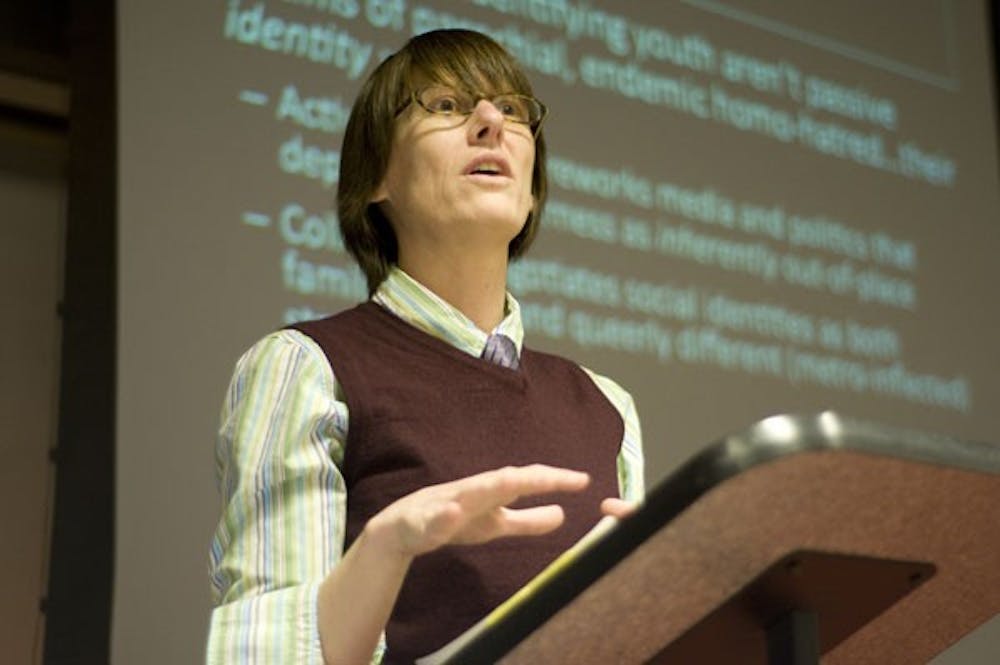An author from Indiana University spoke to more than 30 people Wednesday night about how people of the lesbian, gay, bisexual, transgender and questioning community use the Internet and local resources to form their queer identities in rural communities.
Mary Gray wrote the book, “In Your Face: Stories from the Lives of Queer Youth,” as well “Out in the Country: Youth, Media, and Queer Visibility in Rural America,” which was published in 2009.
Gray was brought to ASU by the Justice and Social Inquiry department in the School of Social Transformation, Hugh Downs School of Human Communication, ASU English department and two other outside community organizations who support LGBTQ.
Many areas in rural America don’t have the resources to have an LGBTQ community, Gray said. They often lack resources, like a critical mass of LGBTQ members or economic resources to socialize as a group, she said.
“As a result, gay youth are taught to think they have to move to a city if they want to be a gay. If they stay in these small towns, it won’t get better,” Gray said.
She discussed outlets that LGBTQ youth have used to come to terms with their identities, such as a blog called “AJ’S FTM Journey,” where a man discusses his transition from a woman to a man.
“This allowed him to literally plant his queerness — his differentness — locally,” she said. “As a result, smaller communities are able to make these connections whether the population is large or not.”
Spanish doctoral student and member of ASU’s Grad Out club Charlie St. George said he grew up in the small town of Safford, Ariz., and understood what is was like to grow up in a rural area where there weren’t a lot of options available.
“If I wanted a gay community I would have had to drive two hours to Tucson or three to Phoenix and hope to meet someone in a bar,” he said. “And when you’re 16, you can’t get into bars.”
St. George said he knew two people from Safford who killed themselves before they turned 22, partially because LGBTQ lifestyles are not accepted by many people in the community.
All the new resources for LGBTQ youth to express their identity, such as the Internet and social media, was something that was interesting to him since he understood what it was like to not have an outlet, he said.
ASU professor Madelaine Adelman, who organized Gray’s lecture, said the event would reach any type of student who grew up in a rural community.
“There really is an invisible rural population at ASU that we never talk about,” she said. “Rural students live in isolation, and they live in these abandoned communities that we forget have different experiences from people who grew up in more populated areas. This affects all students, not just ones who identify as LGBTQ.”
Reach the reporter at sheydt@asu.edu





